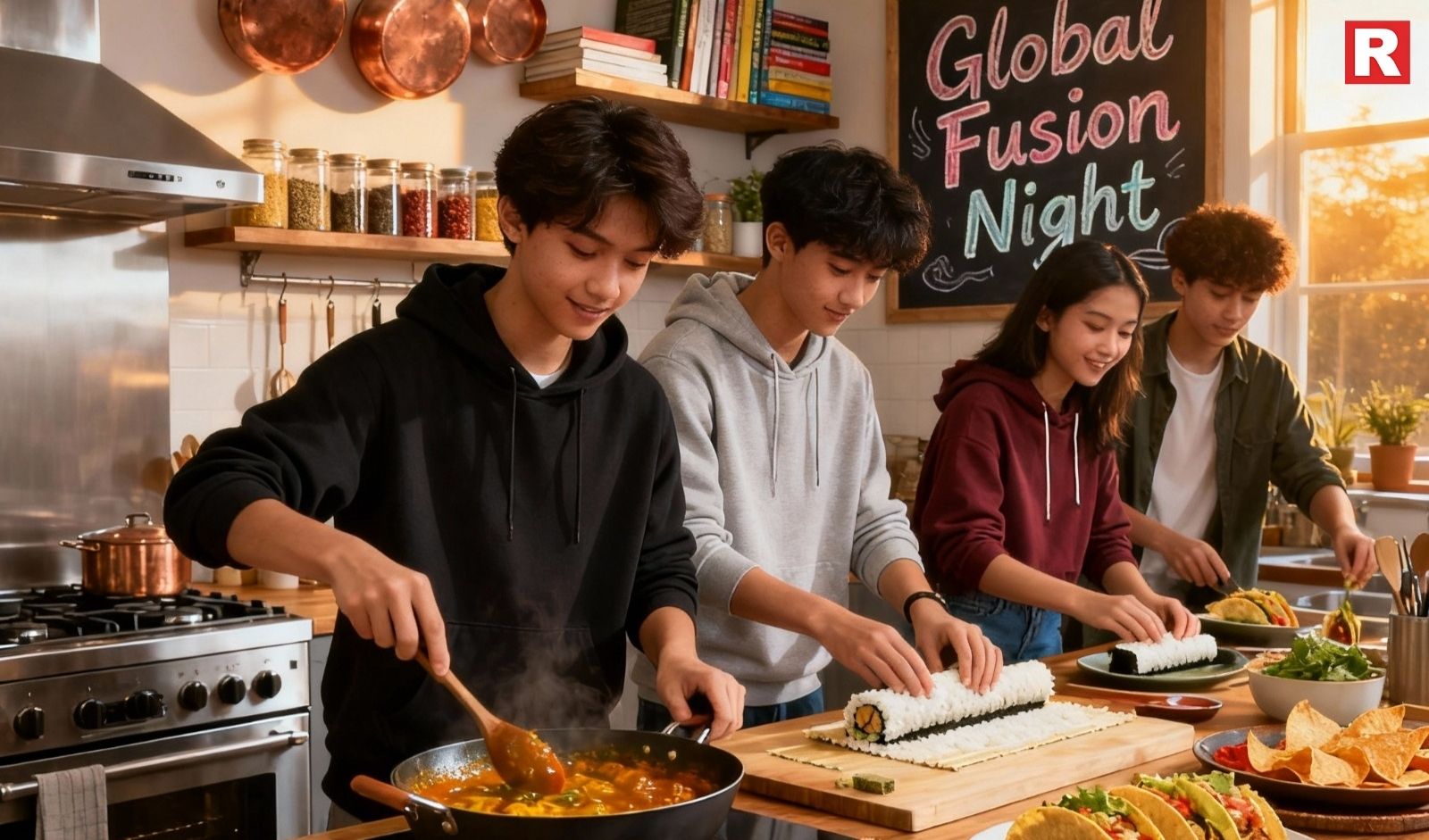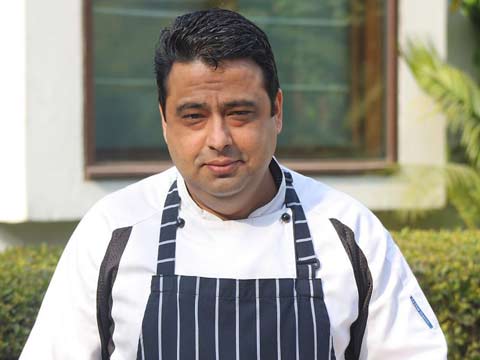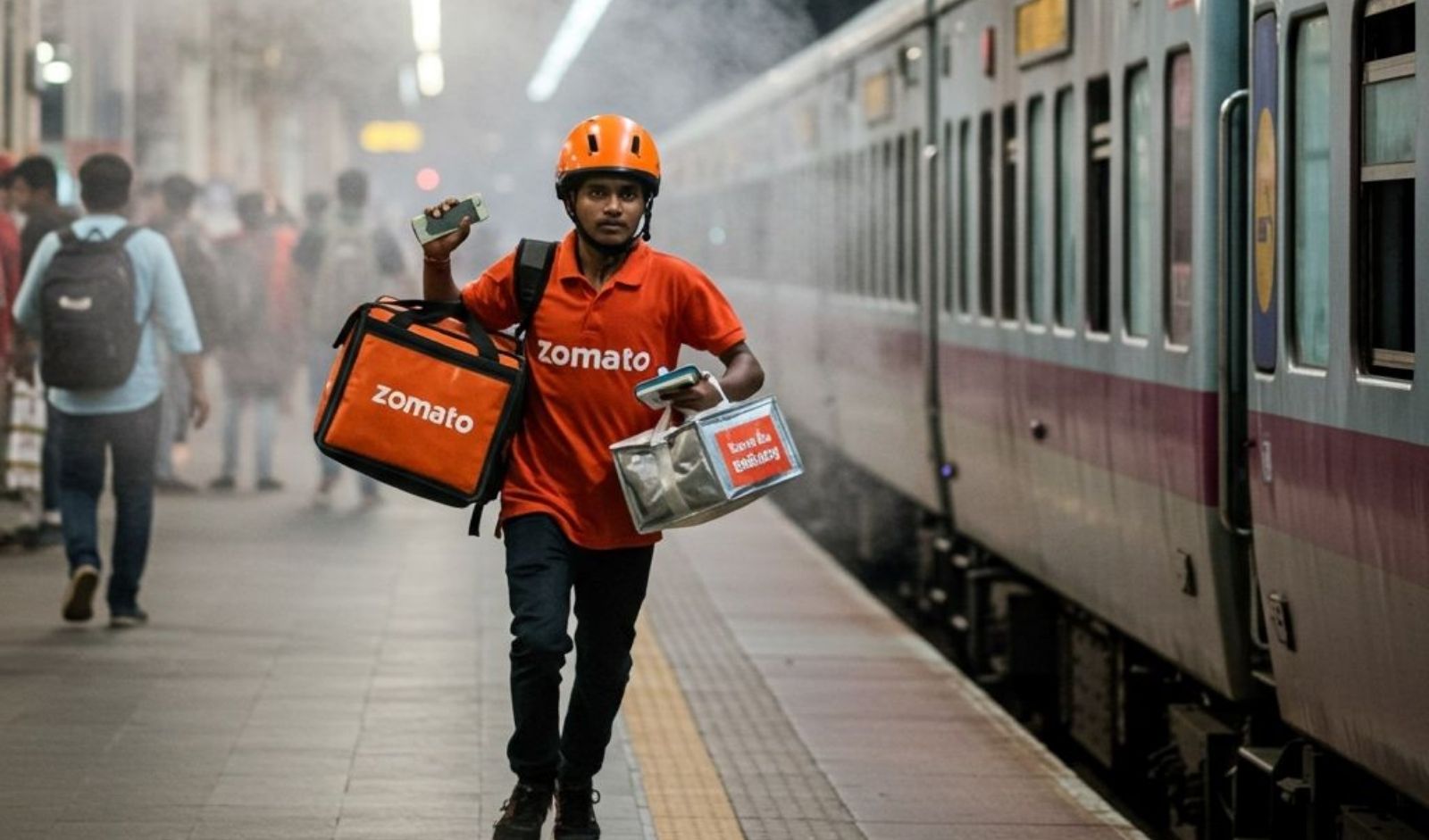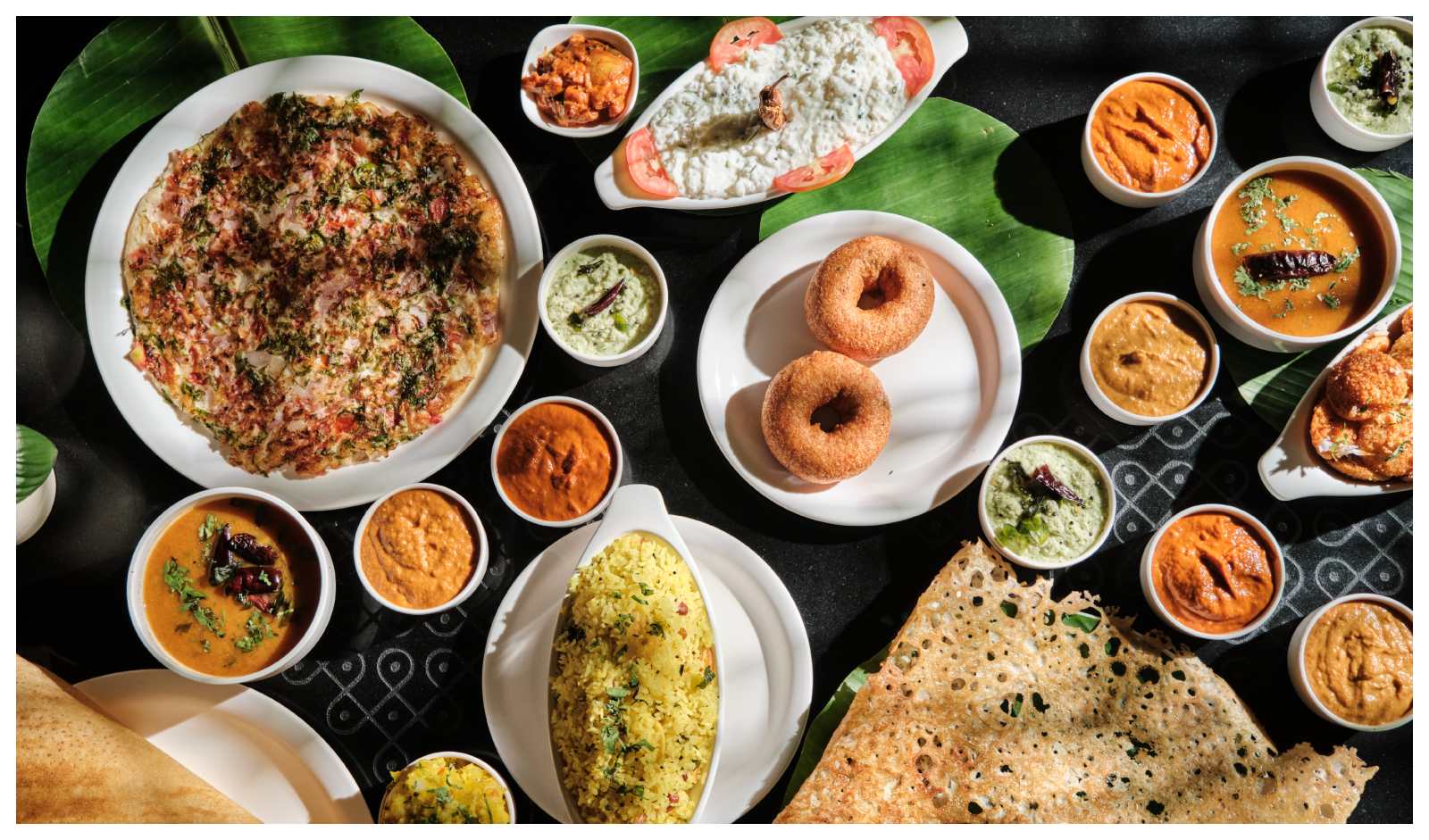
Food today crosses borders. It is not tied to one culture or one place. It has become global, diverse, and always changing. One of the biggest changes in recent years is the rise of fusion flavours. These are dishes that mix global styles with local twists. They are winning hearts everywhere.
Fusion food is no longer just a restaurant trend. It has made its way into home kitchens. It is shared on social media. It has become a part of the daily meals of young people, especially Gen Z. From sushi tacos to butter chicken pasta, the craze is strong. These dishes may sound unusual at first. But they offer both comfort and excitement. They give people something new without losing the taste of the familiar. Gen Z is driving this trend. They look for variety and creativity. They enjoy food that tells a story. They are open to experiments and new flavours. Fusion food shows how culture and taste can meet on a single plate. It is a sign of changing times, where food is not about rules but about mixing and enjoying.
Read more: Top 7 Regional Indian Thali Platters That Showcase Culinary Diversity
10 Steamed Indian Dishes Beyond Idli & Dhokla
The Fusion Craze
Fusion food is not new. Chefs across the world have experimented with combining flavours for decades. But what makes it unique today is how quickly it has spread to the mainstream. Social media has played a big role. A quirky dish gets posted, goes viral, and suddenly, everyone wants to try it at home.
Think of ramen burgers, Maggi sushi, or tandoori momos. They may sound unusual at first, but that is exactly why people are curious. The more different it is, the more likely it is to attract attention.
Why Fusion Works So Well
Fusion food works because it strikes the right balance. It takes something familiar and adds a layer of surprise. For example, pizza is loved worldwide. Add a butter chicken topping, and suddenly, you have something exciting but still comforting.
Another reason is that fusion is highly visual. These dishes look colourful, creative, and fun. On Instagram or YouTube, they get shared instantly. For a generation that eats with the eyes before the taste buds, this is a winning factor. Cost is another reason. Cooking fusion recipes at home does not always require high-end skills. With easy ingredient swaps, home cooks can make international-inspired meals without spending too much.
Gen Z and the Fusion Connection
No group has embraced fusion flavours as much as Gen Z. They are adventurous with food. They don’t want to eat the same thing every day. They want food that tells a story. Gen Z has grown up in a connected world. Travel shows, Netflix food series, YouTube cooking videos, and TikTok trends expose them to cuisines beyond borders. A student in Delhi can try making Korean bulgogi, while someone in Bangalore experiments with Mexican-style samosas.
Food is also about identity for this generation. Posting a photo of butter chicken tacos is not just about the taste—it is about expressing creativity. It becomes a part of lifestyle and community.
Fusion in Home Kitchens
Earlier, fusion was something you only found in fancy restaurants. Today, it is a regular part of home kitchens. Quick recipes like paneer quesadillas or spaghetti with Indian tadka are easy to make. Fusion desserts are also trending, such as matcha kulfi or chocolate samosas. The growth of global ingredients in supermarkets has played a huge role. A decade ago, it was hard to find things like avocado, quinoa, or gochujang in India. Today, these are available not just in metros but also in smaller cities. Quick commerce apps like Zepto, Blinkit, and Instamart make it even easier. A home cook can order sriracha or tortillas in minutes.
For many, cooking fusion at home is also about fun. Families experiment together, trying dishes they saw online. It adds variety to everyday meals and makes cooking less routine.
Know more: Top Rajasthani Dishes to Try This Festive Season
Fusion in Restaurants and Cafés
Restaurants too are rethinking their menus. Many cafés now serve global-local combinations to attract younger diners. You will find pasta with Indian spices, tacos with paneer fillings, or even cocktails with desi flavours like paan and tamarind.
Desserts are also being reinvented. Cheesecakes with gulab jamun, rasmalai tiramisu, and filter coffee panna cotta are becoming crowd favourites. Fusion is not just about combining cuisines—it is about creating experiences. Chefs are also blending regional Indian dishes with global flavours. For example, Goan chorizo pizza or Hyderabadi biryani arancini balls. These dishes showcase local heritage while making it accessible to global palates.
Market Value and Growth
The demand for fusion is not just cultural, it is also commercial. The global food fusion market has grown steadily, driven by consumer demand for novelty. In India, the trend is supported by two key factors:
- The quick commerce boom – Gen Z can access global ingredients in record time. This makes fusion easier at home.
- Rising disposable incomes – Young professionals are willing to spend on dining experiences and food experiments.
Food delivery apps like Swiggy and Zomato also contribute. They often highlight fusion menus, promote special offers, and make it easy for young diners to try new dishes. Restaurants have noticed that menus with fusion options often perform better. A survey by local F&B consultants shows that younger diners are more likely to revisit a restaurant if the food feels unique and shareable.
Why Fusion is Here to Stay
Some food trends fade quickly. Fusion, however, seems to be here for the long run. The main reason is cultural curiosity. Today’s youth do not see food as limited to borders. For them, a kitchen is a place where any flavour can meet another. Fusion also aligns with the idea of personalization. People want to make food their own. Mixing cuisines allows them to create something that feels unique. As more global brands enter India and more local chefs innovate, the trend will only grow. What started as an experiment is now part of everyday dining.
Also check: Festive Seasons Are Changing the Restaurant Industry in India
The Top 7 Sweet Dishes You Can’t Miss This Durga Puja
Frankenstein-Inspired Foods and Drinks for Your Spooky Celebrations
A Taste Without Borders
Food today is less about rules and more about freedom. It is about mixing, matching, and enjoying. Fusion flavours have created a new way for people, especially Gen Z and home cooks, to connect with what they eat. They find comfort in traditional roots but also enjoy the thrill of something new.
When butter chicken blends with pasta, or sushi takes a desi twist with chutney, it reflects the changing nature of food. Dishes are no longer limited to their origins. Instead, the kitchen has become a playground where flavours from across the world can meet on one plate. The rise of fusion is about more than taste. It reflects creativity, culture, and self-expression. For Gen Z, food is not just a meal—it is an identity and a story they share. Fusion speaks their language, one that celebrates both heritage and curiosity.

Fusion food in India is no longer just a trend; it’s a reflection of who we are and where we’re headed. Diners across the country are embracing inventive combinations, not just for novelty, but because fusion feels like a natural extension of the Indian palate. From major cities to emerging markets, there’s a rising interest in food that’s both comforting and adventurous. This shift is especially driven by Gen Z and millennial, who crave for cross-cultural dining experiences.
In India, 50-60% of the restaurants focus on serving fusion food although it’s still a growing trend in the industry.
Reflecting cultural identity and personal expression
Fusion is much more than a mix of cuisines; it’s a powerful form of personal and cultural storytelling. Every fusion dish becomes a canvas for memory, migration, creativity, or reinterpretation. In a country as diverse as India, where Portuguese, Japanese, Persian, and Chinese influences are already part of our culinary DNA, fusion feels almost organic.
“Today’s chefs are simply reimagining those legacies through a contemporary lens, making the cuisine a personal expression as much as a cultural one,” shared Dinesh Arora, Founder of Roma, Chica, and Qavalli.
Role of fusion in contemporary restaurants
Fusion today is no longer just an experimental whim. It has become a thoughtful expression of a restaurant’s personality and the evolving tastes of its diners.
Putting up his views, Chef Madhav Sukhija, Head Chef, Pastiche shared, “Fusion serves to create an experience that reflects our globalized, layered identities. Every dishes offer a story, a sense of culinary adventure that resonates with well-travelled, curious diners.”
Fusion today is not just a culinary experiment, it’s a statement. “For us, fusion plays a pivotal role in shaping the dining experience. By combining Japanese Peruvian and Bachiche influences, we tap into a world of global flavours while creating a narrative that is fresh, immersive, and culturally expressive,” commented Chef Krishna Sharma, Head Chef of Swan. Good fusion is not just art, its science.
Winning Hearts with Fusion Flavours
Chefs are redefining traditional dining by artfully combining global culinary techniques with local ingredients or fusing contrasting cuisines in inventive ways.
Commenting on this, Arora said, “We’ve witnessed successful fusion firsthand in our kitchens. Examples include layering sharp cheeses over hearty dals or using tangy tamarind glazes on pork belly. These combinations push the palate while staying rooted in Indian flavors, offering something new yet comfortingly familiar.”
Unique, visually captivating dishes drive immense traction on social media, an organic marketing engine that pulls in a younger, experience-seeking crowd. “At Pastiche, dishes like the Miso Caramel Tart or the Jamaican Jerk Chicken Pizza generate the kind of Instagram buzz that traditional fare may not. Beyond visibility, fusion menus also promote repeat visits. Guests return not only to enjoy favourites but to explore new creations,” added Chef Madhav.
Ankit Singh, COO, Epitome shared, “Our menu includes dishes like Vada Pav Fondue, Plant Protein Lollipops, Quinoa Masala PaniPuri, and Batata Bravas all designed to surprise the palate while remaining rooted in comfort.” The chemistry of fusion lies in understanding flavors at a molecular level pairing textures, balancing umami, acidity, and spice.
The Major Challenges
Fusion food does come with challenges. When done poorly, it can come off as gimmicky or lack authenticity. “Striking the right balance between tradition and innovation requires restraint, clear intent, and respect for the original cuisines. But when done right, fusion becomes more than a concept,” added Arora who pointed that it's an experience that connects people through curiosity and storytelling on a plate.
Training kitchen staff to execute a menu that spans multiple cuisines often with unfamiliar techniques, demands time and rigor. Chef Madhav said, “Certain combinations may be unfamiliar to guests, requiring thoughtful storytelling on the menu and at the table to ensure that every dish feels inviting rather than intimidating.”
Maintaining consistency in execution especially when working with lesser-known ingredients or techniques is a challenge. “For chefs and teams, this demands continuous training, deep R&D, and a strong understanding of the cuisines being combined,” added Sharma. Partnering with chefs who understand the cuisine's nuances and adapting to customer feedback ensures alignment with evolving tastes.
From a business perspective, fusion food delivers high value generating buzz, attracting more diners, and often allowing for premium pricing. Around 40% of revenue is gained through fusion food that is preferred by younger crowd.
But for the future, it will be focused more on health-forward fusion, tech driven fusion, hyper local with global techniques and cultural conversations.

Ever wondered who asked for butter chicken pizza or biryani-flavored tacos? Turns out, we all did. The food industry is thriving on quirky combinations that blend global favorites with local classics, serving up dishes no one thought they needed but everyone ends up loving. From sushi rolls with a tandoori twist to jamun bubble tea, these creative fusions aren’t just taking over menus and Instagram feeds—they’re reshaping how we experience food. Fusion food is gaining popularity.
Online mentions and recipe searches have increased significantly. Zomato reports that 22% of urban orders are fusion dishes, proving that culinary creativity and unexpected flavors are in high demand.
This moment perfectly encapsulates a significant shift happening in the food industry today. Consumers aren’t just looking for good food—they’re searching for stories, connections, and flavours that offer something unexpected yet familiar. It’s a demand that traditional menus often fail to meet, leaving space for a new wave of innovation: cultural fusion and micro-cuisines. These trends represent more than novelty—they embody a reimagining of how food can bridge cultures, spark curiosity, and keep brands ahead in a rapidly evolving market.
And that’s exactly where cultural fusion and micro-cuisines come in. These trends aren’t just about blending flavours; they’re about reimagining traditions, breaking boundaries, and creating something that feels both nostalgic and refreshingly novel.
The rise of fusion and micro-cuisines
The food landscape today is evolving at an unprecedented pace. Traditional boundaries that once defined cuisines are dissolving, and a new wave of culinary exploration is taking over. Cultural fusion is no longer just a concept; it’s a powerful movement. Indian street food meets Korean spices, Mexican tacos are reimagined with Mediterranean hummus, and Italian pizzas now come topped with paneer tikka.
The Indian food market, currently valued at $77.54 billion, is projected to grow to $125.06 billion by 2029 (According to Food Service Market size and share analysis). This explosive growth is fueled by increasing global exposure and a younger demographic that prioritises novelty and personalisation in their food choices. According to a recent survey by Restroworks, 67% of Indian millennials are eager to try fusion cuisines, and over 50% consider micro-cuisines as an exciting way to explore flavors beyond mainstream offerings.
Why it works
India’s diverse palate is the perfect playground for culinary experimentation. With regional cuisines as varied as Kashmiri wazwan and Chettinad curries, Indians are naturally adventurous eaters. This cultural openness, combined with rising global influences, creates the ideal environment for fusion and micro-cuisines to thrive.
Here’s what makes these trends so effective:
1. Global meets local: Fusion cuisines balance the exotic with the familiar. For instance, at Boba Bhai, we combine Korean gochujang-based sauces with Indian masalas to create a burger that’s exciting yet comforting.
2. Visual appeal: Gen Z and millennials prioritise Instagram-worthy food. Bright colors, unique presentations, and playful combinations (like our Peach Bubble Tea with popping boba) make for great shareable content and increase brand visibility.
3. Cultural relevance: By tying offerings to popular trends—like India’s love for K-pop or the resurgence of regional ingredients—brands can create deeper emotional connections with their audience.
Innovation meets tradition
Micro-cuisines are another area where brands are finding success. These hyper-localised food styles, often overshadowed by larger regional cuisines, are making their way onto menus and into the hearts of foodies. By spotlighting niche flavours, brands not only pay homage to culinary traditions but also bring a sense of novelty to their offerings.
Take the example of Jamun Kala Khatta Bubble Tea. This drink combines the tangy, street-side flavors of Indian summer with the playful, chewy textures of Taiwanese bubble tea. It’s this kind of blending of tradition and innovation that captures both curiosity and loyalty.
Staying ahead of trends
To stay competitive in today’s food industry, brands need to be agile, creative, and deeply in tune with their audience’s evolving tastes. Here’s how food brands can leverage these trends effectively:
● Experiment and adapt: Rapidly testing new flavor combinations and formats is key. At Boba Bhai, we actively listen to customer feedback to tweak our offerings, ensuring they resonate with our audience.
● Leverage data: Understanding consumer preferences through data analytics helps brands make informed decisions about flavor profiles, packaging, and even marketing strategies.
● Collaborate creatively: Partnering with local chefs, cultural influencers, or even other brands can result in unique creations that spark curiosity.
The bigger picture
Cultural fusion and micro-cuisines aren’t just trends; they’re reflections of how interconnected our world has become. They show us that food is more than sustenance—it’s a language, a bridge, a celebration of our shared humanity. As brands, we have the privilege of being storytellers, creating dishes that connect people to memories, places, and emotions.

India has long been a culinary melting pot, boasting a rich and diverse food heritage influenced by its vast geography, cultural variations, and history of trade and invasions. From the spices of Kerala to the kebabs of Lucknow, Indian cuisine has embraced and evolved through the centuries, integrating elements from Persian, Mughal, Portuguese, and British cuisines. In recent years, however, the concept of fusion food has gained immense popularity, not just as a blend of global and Indian flavors but also as an expression of creativity that challenges traditional boundaries. The growing trend of fusion food in India reflects its evolving palate, culinary experimentation, and globalization of tastes.
What is Fusion Food?
Fusion food refers to a style of cooking that combines elements from different culinary traditions. It’s a fusion of diverse cultures, ingredients, and techniques that results in innovative dishes with unexpected flavors and textures. In India, fusion cuisine typically blends traditional Indian flavors with international cuisines like Italian, Mexican, Chinese, Japanese, and more.
Factors pushing the growth of fusion cuisine
Globalization and Urbanization: One of the biggest reasons for the rise of fusion food in India is globalization. As more Indians travel abroad and are exposed to different cultures, they return with a taste for international cuisines. This exposure has also been bolstered by the rise of global media, which has introduced Indian consumers to food shows, celebrity chefs, and international food trends.
Urbanization has also contributed to this shift in tastes. With the growth of cities, the middle class has expanded, and with it, a demand for diverse dining experiences has emerged. Urban consumers, particularly millennials and Gen Z, are more adventurous and willing to experiment with different cuisines. Restaurants have capitalized on this trend by offering fusion dishes that cater to these evolving palates.
A Platform for Culinary Creativity: Fusion food allows chefs to push the boundaries of traditional cooking, leading to the creation of innovative dishes. Many Indian chefs are classically trained in global cuisines but maintain a deep connection with their roots. This dual expertise allows them to play with flavors, combining the best of both worlds.
Health and Dietary Trends: India has witnessed a significant shift toward healthier eating habits. This trend has given rise to fusion dishes that balance traditional Indian flavors with health-conscious ingredients. For example, quinoa biryani or avocado paratha blend Indian comfort foods with globally recognized superfoods, offering health benefits without compromising on taste.
Similarly, vegetarian and vegan fusion foods have become increasingly popular in response to the growing demand for plant-based diets. Indian cuisine, which already has a wealth of vegetarian options, lends itself well to fusion experimentation. Vegan butter chicken made with tofu or jackfruit tacos inspired by Indian flavors are just a few examples of how fusion can meet modern dietary preferences.
Popular Fusion Food Trends in India
Indo-Italian Fusion: One of the earliest and most popular fusion trends in India has been Indo-Italian cuisine. Dishes like paneer tikka pizza, masala pasta, and Indian-style lasagna have become a staple at restaurants and cafes. The use of Indian spices and ingredients like paneer, coriander, and cumin with Italian staples such as pasta and pizza creates a harmonious blend of flavors.
Indo-Mexican Fusion: Mexican cuisine shares several commonalities with Indian food, including a love for bold flavors, spices, and ingredients like beans, tomatoes, and chilies. Indo-Mexican fusion has produced exciting dishes like rajma burritos, nachos with paneer tikka, and samosa tacos. This blend of two rich and flavorful cuisines has been well received by Indian food lovers.
Indo-Asian Fusion: The popularity of Chinese, Thai, and Japanese cuisines in India has led to a rise in Indo-Asian fusion dishes. Indo-Chinese fusion, in particular, has long been a favorite, with dishes like hakka noodles, manchurian, and schezwan dosa becoming ubiquitous. However, new trends like sushi infused with Indian spices or dim sum stuffed with tandoori fillings are pushing the boundaries of this fusion further.
The Role of Street Food: Street food culture has played a significant role in popularizing fusion food in India. Fusion chaats, for example, blend Indian street snacks with international flavors. Take a "pasta chaat" or "nachos bhel" — these are creative, affordable, and highly accessible to the masses. The street food vendors have embraced the fusion trend wholeheartedly, offering experimental and trendy dishes to the everyday consumer.
The Future of Fusion Food in India
The future of fusion food in India looks incredibly promising. As consumer tastes continue to evolve and globalization continues to bring diverse culinary influences to the country, chefs and food innovators will keep pushing the envelope, creating exciting new combinations. With growing demand for health-conscious, sustainable, and plant-based options, fusion food will likely continue to integrate these trends.
Moreover, India’s long history of culinary evolution makes it an ideal environment for fusion food to thrive. From Mughlai to Indo-European influences, Indian food has always been a product of cross-cultural exchanges. In the modern context, fusion food is simply a continuation of this tradition, making Indian cuisine a vibrant and ever-evolving entity.
As consumers become more adventurous, the fusion food trend will only grow in popularity, adding new chapters to India’s already rich culinary legacy.

When Burrito meets Biriyani, it is a fantasy even for the biggest food aficionado. And it is Chef Koushik Shankar, better known as the Madd Chef, who should be credited for bringing such an unique idea on our platter. Post his astounding career with Qwikys, Java Green and Café Coffee Day (for whom he created impeccable menus), Chef Shankar started his F&B consulting company Eatitude helping budding entrepreneurs to take their first step in the F&B industry. It was at his office in Chennai where he met Sakthi Vinod Rajan and his business partner Shyam Viswanathan, who were planning to diversify their business in the F&B sector. Vinod swear by South Indian cuisine with roots in Madurai and what really struck with them was the fact that Chef Koushik was able to create the essence of Madurai in Chennai itself. Over the next three months, as many as 250-odd South Indian dishes were designed for their Chennai based restaurant Maplai, first restaurant venture of the group.
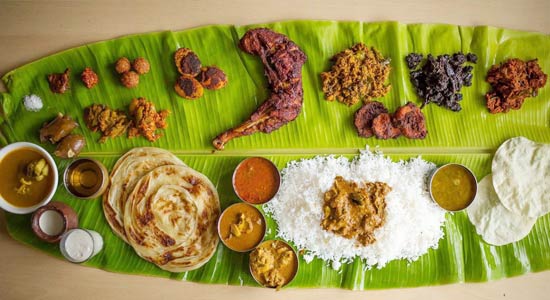
CAPTURING THE TREND
Fusion and unique concepts have always excited the ‘Madd chef’. And, one such dish would be Biriyani Burrito which is a huge hit at the Maplai. However, the restaurant prides sticking to the best in terms of raw materials and ingredients. “For example, we source our mutton from Erode which is known for its meat in terms of its texture and tenderness. It might be expensive but we don’t compromise on quality,” adds Chef Koushik.

RELISHING THE MOMENT
“We had just opened and a 60-year-old gentleman walked up to me, shook my hands and said - had a hearty meal after a long time,” remembers Vinod, who always wanted to bring Madurai and its food in Chennai. Maplai’s first outlet opened in Nungambakkam (Chennai) in 2014 and they setup their second outlet in ECR (Chennai) in 2017. The restaurant serves cuisines from the four states of south India. “It was challenging to stand out in the market which already had few major players and plenty to offer. Hence, we decided to source top-class raw materials for which Maplai will stand out,” shares Koushik, who is now working extensively on ‘Sitcom-The Drama Diner’ a relatively newer brand and a pure-veg fine dine restaurant on global cuisine.

Food and its taste can never be withheld within boundaries--- the taste, color, and aroma of food are very stubborn to be bound in imaginary lines. The millennials have spread their wings to fly way anywhere just to have that peculiar taste linger on their tongues, that is the beauty of food.
These varied lifestyles have compelled the cuisines to cross borders and land on the plate, thereby accelerating the entire food business. To satisfy the desires of millennials and matching steps with trends, foodpreneurs have optioned the following categories to align their business with the demands:
Customised Menu:
Having the same food becomes monotonous and boring especially for people who stay in a hostel or depend upon catering service or on a maid. To change the taste, restaurants are flooded especially during weekends, but when you can have a plate full of taste from around the world, why compromise with one.
The customised menu is trending these days due to the growing fondness for good food, that millennials look forward to. A plate of Indian meal accompanied by continental dishes, or Japanese dish Sushi or Korean dish Kimchi, bringing the taste of entire world on one plate has been a go-to destination for millennial foodies, which is why foodpreneurs should come up with multiple options under a customised menu.
Alcohol:
Alcohol consumption has become a ritual, where after a tiring exhausting week millennials look forward to relaxing and settle the tension down by pouring small batches of alcohol into their system.
The demand for alcohol has gone up. Reports suggest revenues amassed from sales of alcohol in India will soar vigorously at 7.4% CAGR, and reach INR 5.1 trillion value by the end of 2026.
Pubs and bars have new opportunities for foodpreneurs, coming their way where they can identify and modify mainstream alcohol serving methods to please the millennials.
Small Bites for More Taste:
When sounds of crackling mustard seeds on the hot frying pan fall on the ear and the smell of spicy condiments reach the nostrils, picturing food in the mind, who would want to waste time when the senses have already been tantalized by the aroma of food straight from the kitchen. Millennials are restless, which is why they prefer quick bites.
Also, quick bites give them the privilege to order more in small amounts, to keep the balance of taste on their tongue and helping foodpreneurs in not wasting too much of food.
Healthy yet Tasty Options:
Millennials are opting for a healthy lifestyle and to maintain that, they are looking forward to places, which offer healthy yet tasty options. Healthy salads, low-calorie food, baked or steamed delicious options to compensate heavy workouts, are all that they ask for.
So, foodpreneurs can try to play around healthy and organic food options to present to the customers, that can only be possible if the foodpreneur can sense the pulse of the growing demand of multiple healthy food options and present on the plate.
FoodTech:
This is also an unexplored area; we have only witnessed few in the name of food technology. Foodpreneurs are looking for more innovations to match up with their customers’ demand or to please their customers.
Foodpreneurs can borrow ideas from abroad or can collaborate with foreign brands to get on the track. Foodtech is and will be an area of interest for rivals as well as for millennial. This is how foodies and foodpreneurs can share their love for food on the same table.

Just when it looks like the world is conquering Indian food market, we are witnessing the emergence of more local brands, chefs travelling outskirts to find new recipes and brands, adopting the roots to promote the unconquered and unexplored Indian menus.
Besides, Indian food has multiple varieties; People need to understand that there are more that they need to explore other than North Indian food, which is much hyped at global levels. And, experts believe a little tweaking or a fusion can help regional recipes rock the global platter. And, this is true Chefs Like Gaggan Anand who is rocking Bangkok with his progressive Indian cuisine, Atul Kochhar's modern take on Indian cuisine has curried a huge favour in England: he launched Benares in 2003 in London, followed by Ananda in Ireland and Vatika in Southhampton, Vineet Bhatia is building an Indian ‘Rasoi’ in London, Sanjeev Kapoor is storming Punjabi foods in global diaspora through his shows and restaurants, Hari Nayak is popularising India with his take on modern Indian food and simplified cooking styles and Vikas Khanna has done it all with his ‘Junoon’.
The cross culture mash up
Indian food has come a long way from cross culinary mergers like Wasabi and tuna to fusion of Indian foods with a global twist. Today, restaurants and chefs are infusing desi flavours with a global tadka. And, the culinary blends of culture are more popular these days than those of Japanese, Chinese and Italian emergence. Ranveer Brar, who is looking after culinary at MTV FLYP has some of the great fusions to play with. Some normal dishes with a fusion includes achari salmon nigri which is a blend of salmon cured with achar paste, nigri open sushi, maki nooro wrapped sushi amongst others. Similarly, Chef Sabyasachi Gorai has opened his restaurant which is a take on Armenian cuisine with Bengali influence all credit to Gorai’s roots in Asansol, a place in West Bengal.
Eating is more than just Food... its Entertainment
“Many people are doing molecular gastronomy around food. But, entertainment along with food has picked up pace. People today like to see a lot of Tamasha happening. The gastro pub culture is also on rise,” shared Saransh Goila the young chef who has recently launched Goila Butter Chicken joints in Mumbai, giving butter chicken an all new identity.
It is not only better food, but an everlasting experience is what people are hunting for. And, that is the reason new restaurants with some drama around food and entertainment are rocking Indian food market. To everyone’s amazement, these restaurants are attracting more guest than those who are known for their culinary delights.
“We are blessed to also have brewery. Our 50 percent revenue of total sales is dependent on business we do post 8 our cafes.” shared Vivek Bhargava and Varun Puri of Molecule which is one of the top performing restro-bars in Gurgaon.
We can say that today’s customer are more varied and experienced when it comes to exploring delight. Hence, they are not only choosing good food, but an overall experience which gives them a value for money satisfaction.

Chef Manish Mehrotra has around 18-20 years of experience as a chef. Starting from his college days in Mumbai, he then worked with Taj Group of Hotels there, and later joined ‘Old World Hospitality’ 15 years ago. He worked in London for four years with this company and has travelled all around the world. Today, he is associated with ‘Indian Accent’.
Indian Accent has been awarded best restaurant for years. What is the hidden reason behind this success?
Training, training and training is what I focus at my restaurant. Second important thing is maintaining consistency in the food that we serve at our restaurant. And coming up with something new all the time are few reasons for the success of Indian Accent.
You are known for introducing modern Indian Food. What made you to introduce something new to the Indian plate?
India is now a global country, people from all over the world come to India and everything in the country is on its progressive path. Food was the only thing where we were stuck and people used to think that Indians only eat curry-based food with thick gravy, ghee, or creamy and heavy foods, which was not true. And it came as a major source of inspiration for me that I have to do something with Indian ‘khana’ that everybody appreciates and can relate to it.
How do you maintain the authenticity of the food still playing with the original flavours?
Authenticity is a very subjective word and when you prepare food, similar dishes can be prepared in many ways, and it becomes really difficult to describe what authenticity of food is. At my restaurants, I never compromise on taste of the food. So, according to me, taste is the most important thing and after that you can do anything with the dish.
How is the pricing done at your restaurant?
Food, plus the hard work behind preparing the food, is how we decide on pricing the food.
What is your view on change in the eating habits?
India has developed a lot in last five years. Consumers’ palate has become more adventurous and evolved and they are ready to try new. And are ready to pay money for good food.
What is the current food trend in India?
India is witnessing lots of changes when it comes to food trend. Molecular gastronomy is becoming popular, regional cuisine is taking a new avatar and modern Indian food is replacing the traditional menu.
We see that chefs in India are promoting regional cuisines these days. What is the reason?
Regional cuisines need to be promoted because till now food in India has become typical Punjabi food and it has dominated the Indian food. Everybody in India and outside India thinks that it is the only Indian cuisine, but that is not true. We have different types of foods which are delicious. There is a vast range of food from Kerala, Tamil Nadu, Karnataka, Bengal, Gujarat, and Kashmir, but people don’t know about it. So, this is the reason we as a chef want to promote regional food and regional cuisine.
What are you doing to promote Bihari cuisine?
I have included ‘Sattu Paratha’ in my recipe. People do not know much about Bihari cuisine and for them ‘Litti-Chokha’ is the only Bihari food. Bihari food is not known as regional cuisine rather it is known as community food as Brahaman food will be different from that of a Kayasth food in the region. Bihari food has different varieties including Khaja, Tilkut, Layi, Anarsa, kaddu k patte ka pakoda and the list goes on.
What is your biggest achievement so far?
The biggest achievement is ‘Indian Accent’ which is now number 1 restaurant in India, making Indian food global.
Are you planning to open a restaurant of your own?
No, I am not planning to open a restaurant rather am focusing on taking Indian Accent to international market, as well as opening more stores in India.
Copyright © 2009 - 2025 Restaurant India.




